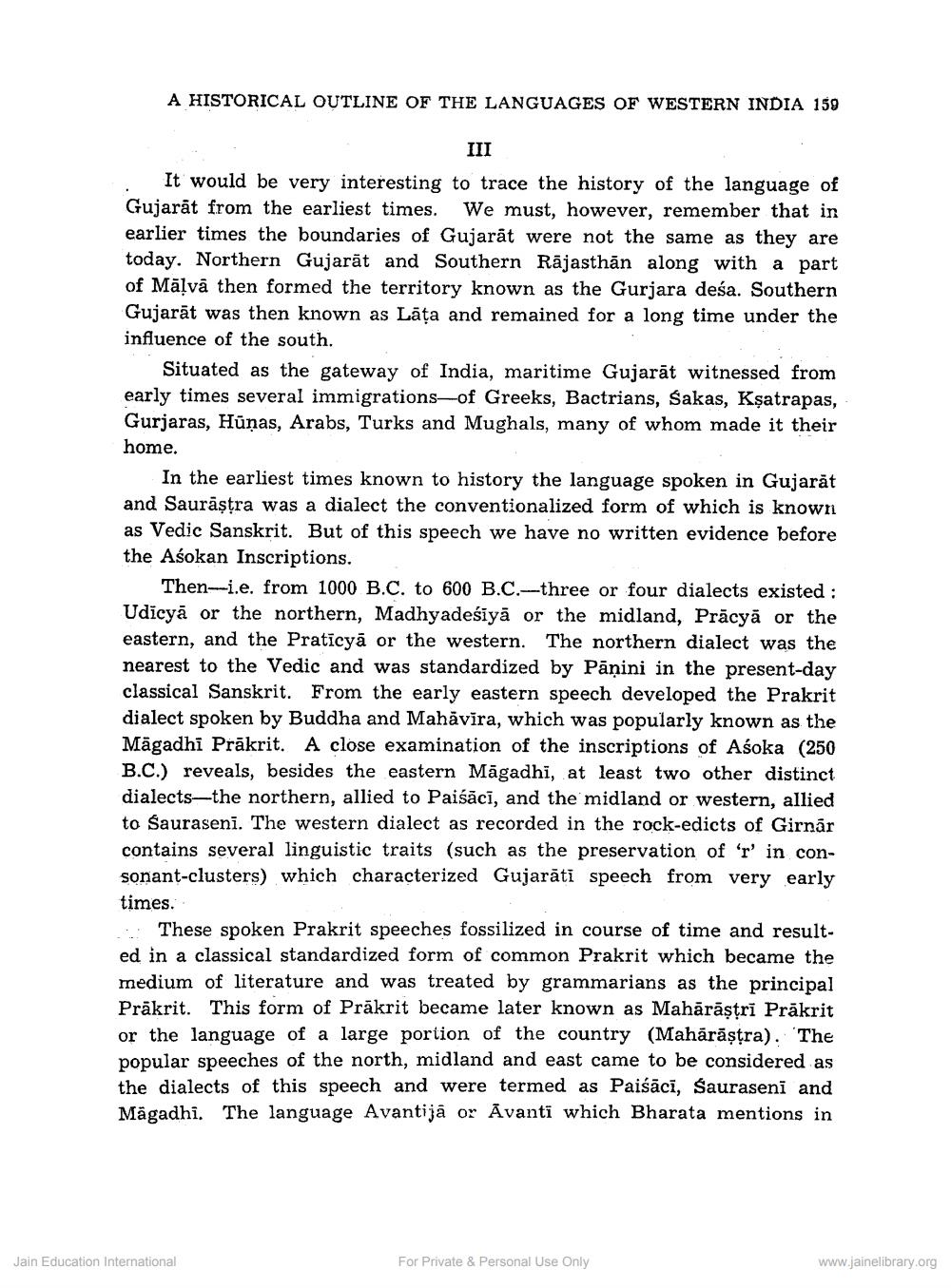Book Title: Historical Outline of the Languages of Western Indian Author(s): K B Vyas Publisher: Z_Vijay_Vallabh_suri_Smarak_Granth_012060.pdf View full book textPage 3
________________ A HISTORICAL OUTLINE OF THE LANGUAGES OF WESTERN INDIA 159 III . It would be very interesting to trace the history of the language of Gujarāt from the earliest times. We must, however, remember that in earlier times the boundaries of Gujarat were not the same as they are today. Northern Gujarāt and Southern Rājasthān along with a part of Māļvā then formed the territory known as the Gurjara desa. Southern Gujarāt was then known as Lāța and remained for a long time under the influence of the south. Situated as the gateway of India, maritime Gujarat witnessed from early times several immigrations of Greeks, Bactrians, Sakas, Kşatrapas, Gurjaras, Hūņas, Arabs, Turks and Mughals, many of whom made it their home. In the earliest times known to history the language spoken in Gujarāt and Saurastra was a dialect the conventionalized form of which is known as Vedic Sanskrit. But of this speech we have no written evidence before the Asokan Inscriptions. Then-i.e. from 1000 B.C. to 600 B.C.--three or four dialects existed : Udicyā or the northern, Madhyadesiyā or the midland, Prācyā or the eastern, and the Praticyā or the western. The northern dialect was the nearest to the Vedic and was standardized by Pāṇini in the present-day classical Sanskrit. From the early eastern speech developed the Prakrit dialect spoken by Buddha and Mahavira, which was popularly known as the Māgadhi Prakrit. A close examination of the inscriptions of Asoka (250 B.C.) reveals, besides the eastern Māgadhi, at least two other distinct dialects—the northern, allied to Paiśācī, and the midland or western, allied to Sauraseni. The western dialect as recorded in the rock-edicts of Girnar contains several linguistic traits (such as the preservation of 'r' in consonant-clusters) which characterized Gujarāti speech from very early times. These spoken Prakrit speeches fossilized in course of time and resulted in a classical standardized form of common Prakrit which became the medium of literature and was treated by grammarians as the principal Prākrit. This form of Prākrit became later known as Mahārāştri Prākrit or the language of a large portion of the country (Mahārāştra). The popular speeches of the north, midland and east came to be considered as the dialects of this speech and were termed as Paiśācī, Sauraseni and Māgadhi. The language Avantijā or Avanti which Bharata mentions in Jain Education International For Private & Personal Use Only www.jainelibrary.orgPage Navigation
1 2 3 4 5 6 7 8 9 10 11 12
